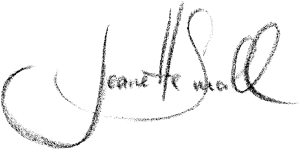PRINTMAKING for the uninitiated
Much of my work consists of Linoleum carvings (often called Linocut). The techniques are very similar to wood carving. I prefer Linoleum because of its smooth surface and its ease of use.
“Print” means that ink was pressed from a plate onto paper rather than applied directly to paper with pens, brushes or other tools. Hand-pulled prints are original pieces of art, not reproductions.
There is a lot to be said about different printmaking techniques, conventions and practices. For persons not familiar with printmaking, I am answering a few frequently asked questions below.
How do you create a Linoleum carving/Linocut/Relief Print/Block Print?
These prints are originals created using analog approaches, not images created on a computer. Unlike reproductions, these prints are not created with the use of a printer. Instead, I create my own stamp or multiple stamps meant to work together. I begin with ideas, which I explore through sketches, then either finalize a drawing or use reference photographs to finalize my design. I transfer the drawing onto a piece of Linoleum using carbon paper (or draw directly onto the Linoleum), then carve away all the parts I do not want to hold ink. When the carving is completed, I apply printmaking inks using a hard-rubber roller (brayer), then place printmaking paper over the inked plate (carving). To transfer the ink from my “stamp” onto the paper evenly and to lend it some embossing, I like to pull my relief prints through an etching press.
My etching press is a heavy piece of machinery that squeezes a large metal plate (printing bed) between two large metal cylinders. I turn the wheel, which pulls the printing bed between the cylinders, which squeezes ink between the carving and the paper.
So, you can make a bunch more of the same print, right?
Once the plates are carved, it is relatively easy to create many copies of the same image – that would be called an edition. Printmakers promise that they will only use the particular plates a limited amount of times by signing their original prints and numbering them. For example, if you see “4/12” in the bottom left-hand corner, that means that you are holding the fourth of twelve (almost) identical images created from one carving, and that this carving will not be used to create this image beyond the twelve already made. If you see “4/12 V.E.”, the letters indicate that the artist chose to create a “varied edition”. Using the same carvings, the artist may have made smaller individual adjustments within the edition – you can expect deliberate and noticeable variation in color, composition (like different placement of a smaller shape) or color and type of paper. If your print is not numbered, the artist has made no commitment to limit how many times they might use the carving(s) to create (basically) the same image.
Why use printmaking for one-of-a-kind pieces?
There are numerous reasons that make carving plates worthwhile even if the plates are used only a few times. The texture printmaking creates is unlike textures that can be created through painting or drawing techniques. I enjoy examining in detail component pieces of my ideas, assembling my images from more developed shapes by playing with color and composition, and relishing in my exploration of different facets of the experience I seek to convey.
I tend to examine my ideas through creating series of one-of-a-kind monoprints and small (often varied) editions of Linocuts. This approach allows you to find within the suite of the thoughts and feelings I explored a particular aspect that speaks to you. I want everyone to be able to own their own unique glimpse of connection between our lived experience – my heart and yours speaking in unison without words.
What is a Monoprint?
Think of a Monoprint like a painting made with carved or etched plates delivering the ink to paper. Monoprints are one-of-a-kind pieces of artwork. In my body of work, to create monoprints, I frequently use multiple plates in unique compositions and often hand-finish by additionally applying ink with a brush directly to paper. Almost all of my monoprints are multi-technique but not multi-media.
What is an Etching?
Etchings are made by cutting into a plate (can be metal, plastic, stone) and then pressing inks into the grooves rather than rolling ink on top of the plate as with a carving. Cutting into etching plates can be done with sharp tools, with the use of acid that eats away at the plate, or through exposing a photosensitive material to UV light to harden some areas and not others. I do not work with acid, and all of my etchings are created with photopolymer plates and with plastic plates into which I carve directly. To get the ink to transfer from the grooves into paper, an etching press is essential.
